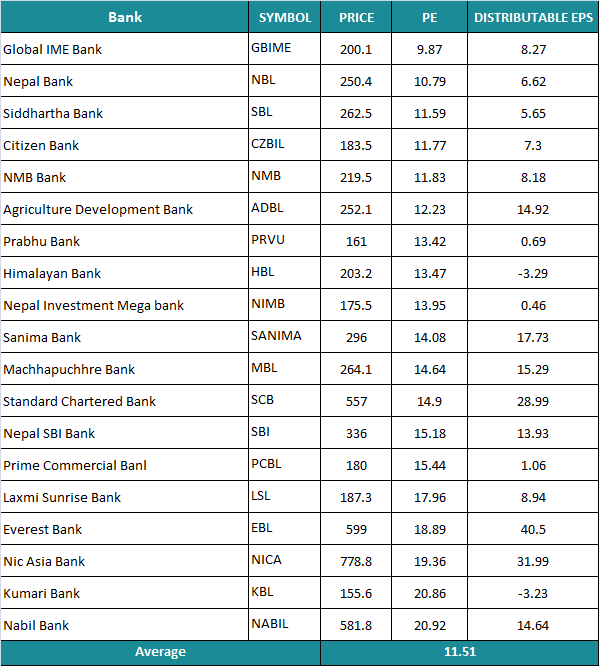Right now, commercial banks are preparing to announce dividends for the last FY. Machhapuchchhre Bank has already announced a dividend while two commercial banks have approached Nepal Rastra Bank for dividend announcement.
Other than them, commercial banks have accelerated dividend distribution procedures. Under such circumstances also, the share price of commercial banks has dived to the lowest level.

Apparently, the downtrend in the stock market fueled the decline in the stock price of commercial banks. However, few good dividend-giver commercial banks are still in demand.
On Tuesday, the stock price of Kumari Bank was traded at 155.6 per unit which is the lowest value in a year. Similarly, a share of Prime Commercial Bank is being traded at Rs 180 per unit and Himalayan Bank’s is being traded at 203.02 which is also their lowest point.
Similarly, NMB Bank recorded its lowest point in a year by trading at 219.50 per unit while Nepal Investment Mega Bank logged its lowest price at Rs 170.10 per unit.
Prabhu Bank’s per unit share was traded at Rs 161 meanwhile its 52-week lowest price is recorded at Rs 166. Nabil Bank was traded at Rs 581.8. It logged lowest price of Rs 574.30 which is 52 weeks low.
Likewise, Nepal Bank and Laxmi Sunrise Bank’s share prices are only Rs 10 higher than the lowest point of the year.
Dividend capacity
In the last FY, the commercial banks had an average dividend capacity of 11 percent. As per the financial report published by the banks, two of them have zero dividend capacity. In the meantime, Everest Bank has the highest dividend capacity of 40 percent.
According to the financial reports, 9 banks have per unit distributable income of Rs 10.
Moreover, few merger-opted banks have attractive reserves due to differences in swap ratio, from which, they can distribute bonus shares to the shareholders.
The financial reports show that Everest Bank has the highest dividend capacity of 40.50 percent. Similarly, NIC Asia Bank has 31.99 percent dividend capacity, Standard Chartered Bank has 28 percent and Sanima Bank has 17 percent dividend capacity.
Low Risks
The P/E ratio of commercial banks meanwhile shows lower risks. As per the last trading price of Tuesday, one dozen commercial banks have less than 15 percent P/E ratio.
P/E ratio, or price-to-earnings ratio, is a quick way to see if a stock is undervalued or overvalued. And so generally speaking, the lower the P/E ratio is, the better it is for both the business and potential investors.
As per international standards, P/E ratio of less than 15 times is considered less risky. Currently, banks with good dividend capacity also have a P/E ratio under 15 times which shows that the investment in commercial banks is less risky.

Among commercial banks, Kumari and Nabil Bank have a high P/E ratio of 20 times, NIC Asia has 19 times, Everest Bank has 18 times and Laxmi Sunrise Bank has P/E ratio of 17 times.